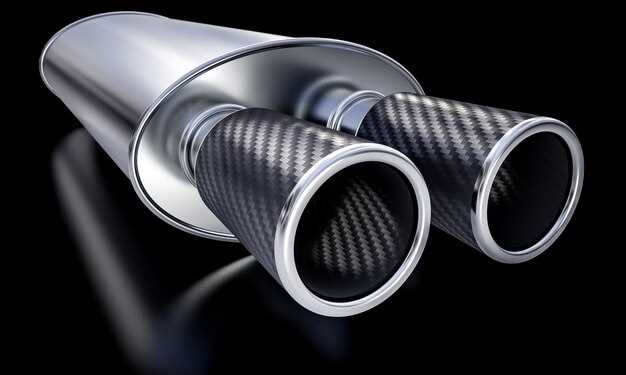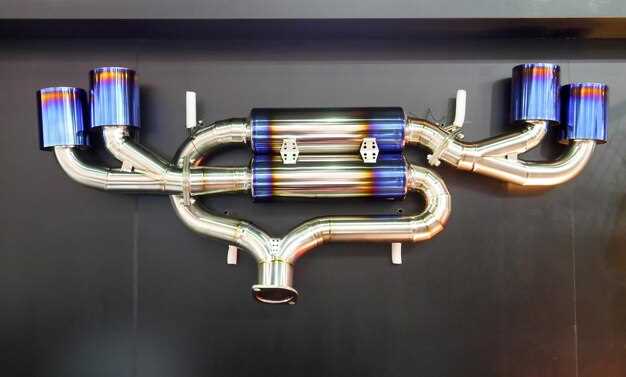
Aftermarket exhaust systems have become increasingly popular among automotive enthusiasts seeking to enhance their vehicles’ performance and sound. These systems are designed to replace or upgrade factory-installed exhausts, offering potential gains in horsepower and torque. However, the decision to install an aftermarket exhaust is not without its considerations, as it comes with a set of advantages and disadvantages that every car owner should carefully evaluate.
One of the primary advantages of aftermarket exhaust systems is the improvement in engine efficiency. By facilitating better exhaust flow, these systems can reduce back pressure, leading to improved performance. In addition, many aftermarket options are available with enhanced acoustic profiles, allowing drivers to achieve a more aggressive sound that often enhances the overall driving experience. However, this can also be a double-edged sword, as the louder noise may not be suitable for all drivers or jurisdictions.
On the flip side, the installation of an aftermarket exhaust can have potential drawbacks. Depending on the design and materials used, some systems may compromise emissions compliance, potentially leading to legal issues and failures in vehicle inspections. Additionally, the gains in performance may not always justify the investment, as the costs can vary significantly based on the brand and complexity of the installation. Understanding both sides of the coin is essential for anyone considering an upgrade to their vehicle’s exhaust system.
Power Gains: How Exhaust Systems Impact Engine Performance
Aftermarket exhaust systems play a crucial role in enhancing engine performance. By optimizing the flow of exhaust gases, these systems can lead to significant power gains. Here are some key aspects to consider:
- Reduced Backpressure: Aftermarket exhaust systems often provide a larger diameter and less restrictive design compared to stock systems. This reduction in backpressure allows exhaust gases to exit the engine more efficiently, which can lead to improved power output.
- Improved Gas Flow: High-performance exhaust systems are engineered for better gas flow dynamics, minimizing turbulence. This results in quicker expulsion of spent gases, allowing the engine to inhale fresh air more effectively, thus enhancing overall performance.
- Tuning Potential: Many aftermarket exhaust systems are designed with tunability in mind. By adjusting the configuration or using variable exhaust valves, drivers can optimize performance across different RPM ranges, providing more power when needed.
Additionally, the material used in aftermarket systems, such as stainless steel or titanium, contributes to weight savings and durability, which further benefits engine performance by reducing overall vehicle weight.
However, it is essential to balance the gains with considerations such as:
- Sound Levels: Aftermarket exhaust systems can significantly increase the noise produced by the vehicle. While many enthusiasts appreciate a sportier sound, excessive noise can lead to legal issues and discomfort during everyday driving.
- Potential for Tuning Requirements: Installing a high-performance exhaust may necessitate additional engine tuning. Without proper tuning, gains can be minimal, and the vehicle’s performance may even suffer.
- Impact on Emissions: Some aftermarket exhaust systems can interfere with emissions control devices, potentially leading to increased emissions and legal ramifications in regions with strict regulations.
In summary, aftermarket exhaust systems can provide significant power gains through enhanced gas flow and reduced backpressure. However, potential drawbacks such as noise, the need for tuning, and emission concerns must be carefully weighed before making a decision.
Sound Quality: The Role of Aftermarket Exhausts in Vehicle Acoustic Appeal

Aftermarket exhaust systems play a significant role in enhancing the acoustic appeal of a vehicle. One of the primary reasons enthusiasts opt for these systems is to gain a more pleasing sound profile, which can dramatically change the driving experience. Unlike factory-installed exhausts, aftermarket options are designed to optimize sound quality, delivering deeper tones and more aggressive notes that many drivers seek.
When selecting an aftermarket exhaust, it’s essential to consider how it can influence the overall character of the vehicle. A well-designed exhaust system can accentuate the engine’s natural sound, providing a harmonious balance between performance and auditory pleasure. This enhancement is particularly noticeable in high-performance vehicles, where the exhaust note can evoke a sense of power and speed, adding to the excitement of driving.
However, the sound quality of aftermarket exhausts can also vary significantly between different brands and models. While some systems offer a deep, throaty roar, others may produce an overly loud or unpleasant sound, which can detract from the driving experience. Therefore, it’s crucial for buyers to research and listen to sound clips or reviews before making a purchase decision.
Moreover, sound quality can impact the perceive of a vehicle’s performance. A resonant, high-quality exhaust note can give the impression of increased power and responsiveness, even if the actual performance gains are minimal. This psychological factor can enhance driver satisfaction and create a stronger connection to the vehicle.
In summary, aftermarket exhaust systems provide the opportunity to gain a more appealing sound quality that resonates with many automotive enthusiasts. When properly selected, these systems can transform the auditory experience of a vehicle, highlighting its performance and enhancing the overall joy of driving.
Installation and Maintenance: Considerations for Aftermarket Exhaust Systems

When considering aftermarket exhaust systems, installation and maintenance are crucial factors that can impact both performance and longevity. Proper installation is essential to achieve the desired power gain and ensure optimal function. It is recommended to have the system installed by a professional or at least someone with mechanical expertise to avoid leaks or improper fitment that can hinder performance.
One of the main advantages of aftermarket exhaust systems is the potential for enhanced power gain. A correctly installed system can improve exhaust flow, which supports better engine efficiency and increased horsepower. However, this benefit can only be realized if the system is aligned properly and secured to prevent vibrations and movement that can cause damage over time.
Maintenance plays a significant role in the lifespan and efficiency of aftermarket exhaust systems. Regular inspections should be conducted to check for signs of corrosion, leaks, or physical damage. Accumulation of debris or soot can also affect performance, so periodic cleaning may be necessary. Ensuring that all fasteners are tightened and that hangers are intact will help maintain structural integrity and prevent potential issues that could lead to decreased power output.
In summary, while aftermarket exhaust systems can provide significant power gains, successful installation and ongoing maintenance are imperative. Taking these considerations seriously will enhance both performance and durability, allowing drivers to enjoy the benefits of an improved exhaust system for the long term.





